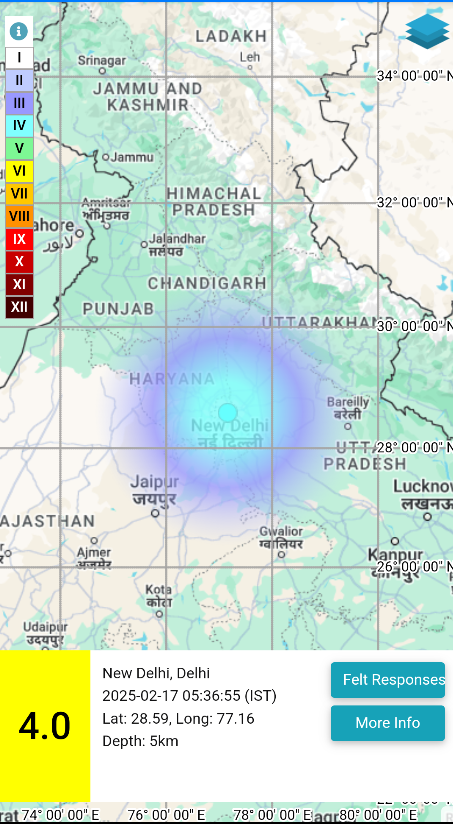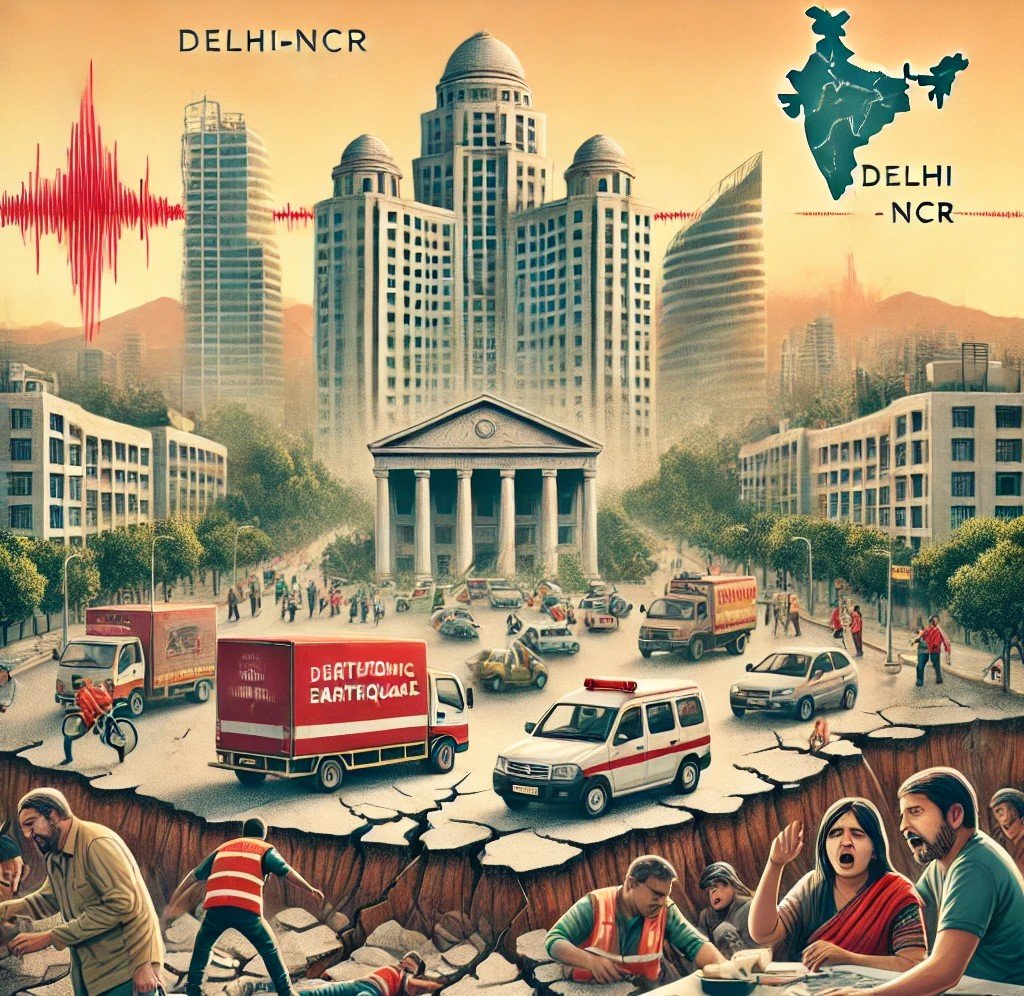
Earthquake in Delhi NCR: Residents of Delhi and the National Capital Region (NCR) were jolted awake early in the morning by an earthquake in Delhi NCR that struck on February 17, 2025. The tremors, measuring 4.0 on the Richter scale, were felt across the city and its neighboring areas, causing momentary panic among the citizens.
While no significant damage or casualties have been reported, the event has once again raised concerns about the region’s vulnerability to seismic activity.
The Recent Quake and Immediate Impact– Earthquake in Delhi NCR
The earthquake, with its epicenter located in New Delhi, occurred at approximately 5:36 AM. The tremors were strong enough to wake people up and prompt them to rush outdoors, a scene reminiscent of past seismic incidents.
Social media was quickly flooded with messages from residents sharing their experiences and concerns, with many wondering if this was a precursor to a bigger event.
Despite the intensity of the tremors, experts have reassured the public that there is no immediate threat of aftershocks or a stronger earthquake. However, the incident has once again highlighted the importance of earthquake preparedness, particularly in a region that falls under Seismic Zone IV, indicating a high probability of future tremors.
A Region Prone to Earthquakes– Earthquake in Delhi NCR:
Delhi-NCR is no stranger to earthquakes. Its proximity to the seismically active Himalayan belt makes it particularly vulnerable to frequent tremors. The Indian tectonic plate’s ongoing collision with the Eurasian plate, which has been happening for millions of years, is responsible for the region’s seismic activity.
Over the years, Delhi-NCR has witnessed several earthquakes, some minor and others more alarming. The fear of a major quake has always loomed over the city, especially considering the unplanned urbanization and high population density.
Experts have consistently emphasized the need for stringent building regulations and enhanced disaster management strategies to mitigate risks.
Earthquake in Delhi NCR: A Look at Recent Seismic Activity in Delhi-NCR
In the last few years, Delhi-NCR has experienced multiple tremors, reinforcing the reality that earthquakes are a frequent occurrence in the region. Here are some notable recent seismic events:

- November 2023: A 5.6 magnitude earthquake originating in Nepal sent tremors across Delhi-NCR, making residents rush out of their homes and offices. The event was a stark reminder of how far-reaching Himalayan earthquakes can be.
- April 2022: A mild earthquake of magnitude 3.8 was recorded near Haryana, with tremors felt in parts of Delhi. Although minor, it raised concerns about an impending bigger quake.
- May 2020: A 4.6 magnitude earthquake hit Rohtak, Haryana, sending shockwaves across Delhi-NCR. This was one of several tremors that year, sparking discussions about whether the region was on the verge of a significant seismic event.
- 2015 Nepal Earthquake: Although not centered in India, the devastating 7.8 magnitude earthquake that struck Nepal was felt in Delhi-NCR, shaking buildings and instilling fear among residents.
While these tremors have caused minimal structural damage, they serve as constant reminders of the region’s susceptibility to earthquakes.
Earthquake in Delhi NCR: Why Delhi-NCR Is at Risk
Delhi lies in Seismic Zone IV, which is classified as a high-damage risk zone. The region is particularly vulnerable due to several factors:
- Tectonic Activity: The Himalayas, which are still rising due to ongoing plate movements, make the entire northern belt of India highly seismically active.
- Dense Population: With a high population density, even moderate earthquakes can have significant consequences.
- Unregulated Urban Growth: Many buildings in Delhi-NCR do not adhere to earthquake-resistant construction guidelines, making them prone to damage in case of a major tremor.
Earthquake in Delhi NCR: Preparedness and Safety Measures
Given the region’s earthquake-prone nature, it is essential to prioritize preparedness. Some key measures include:
- Strict Building Codes: Authorities must ensure that all new constructions adhere to earthquake-resistant standards.
- Public Awareness: Educating citizens on earthquake safety measures can help reduce panic and casualties during an event.
- Emergency Plans: Families and workplaces should have emergency evacuation plans and disaster kits ready at all times.
- Retrofitting Old Buildings: Strengthening older structures to withstand seismic activity can prevent large-scale destruction in the event of a strong earthquake.
Earthquake in Delhi NCR: Conclusion
The recent earthquake in Delhi-NCR is a wake-up call for both authorities and residents to remain vigilant and prepared. While it was not severe, the region’s history and seismic activity patterns indicate that stronger tremors could occur in the future.
Proactive measures, combined with improved infrastructure and awareness, can go a long way in ensuring the safety and resilience of Delhi-NCR against earthquakes. As nature remains unpredictable, preparation is the key to minimizing risks and safeguarding lives.
Please subscribe to Greater Noida Post for your daily news and updates.
You can follow us on social media platforms.



